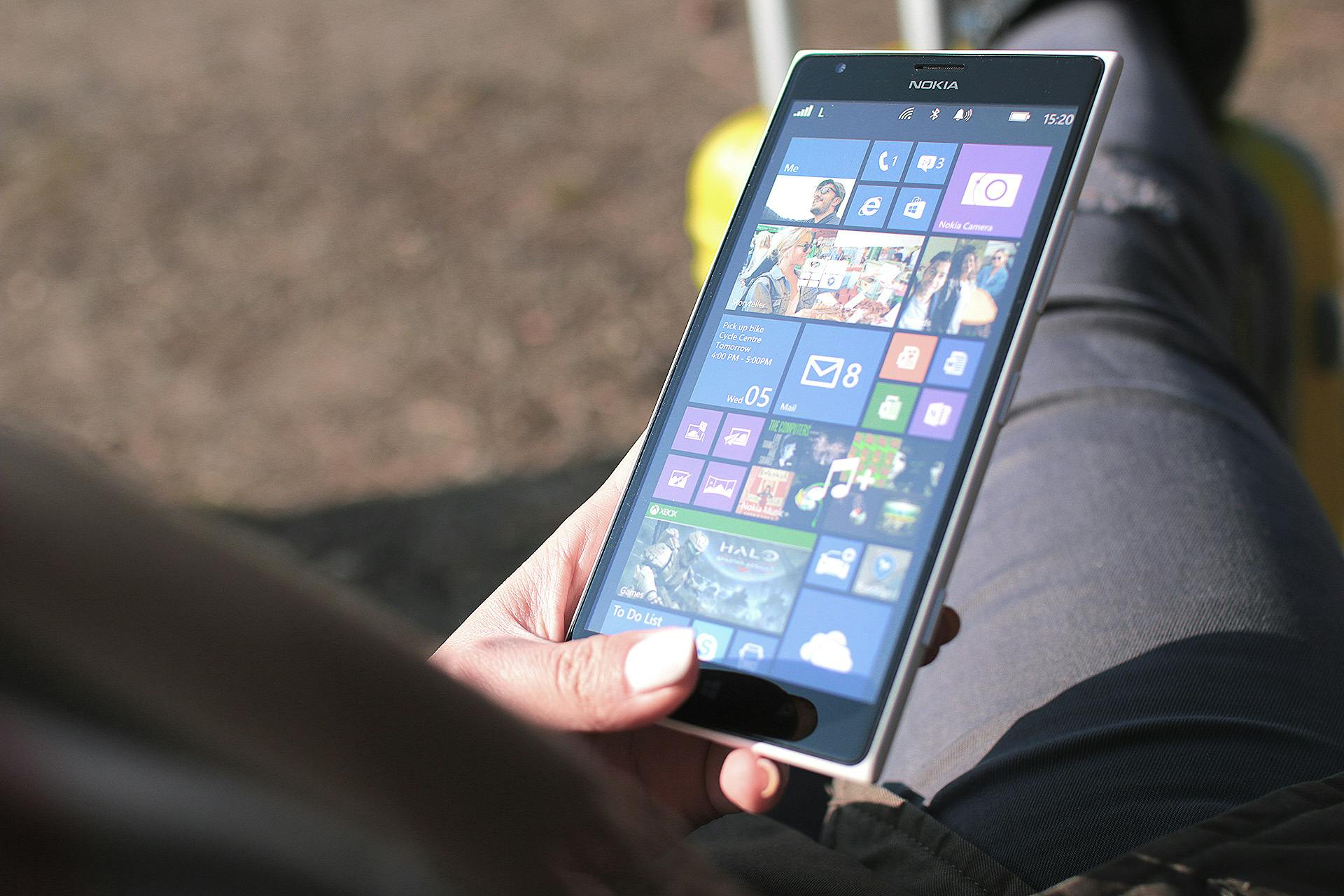Are you struggling with Windows 11 Bluetooth drops that disrupt your wireless experience? You’re not alone! Many users have reported frustrating connectivity issues that can hinder productivity and enjoyment. In this article, we’ll explore effective solutions to unlock seamless connectivity and tackle those pesky Bluetooth disconnection problems. Whether you’re trying to connect your wireless headphones, keyboard, or other devices, we’ve got you covered!
With the rapid adoption of Windows 11, it’s crucial to understand why these connectivity issues may arise. Have you ever wondered what causes your Bluetooth devices to suddenly drop off? From outdated drivers to interference from other devices, there are several factors at play. In the following sections, we’ll dive into practical tips and tricks to help you resolve Windows 11 Bluetooth drops once and for all.
Imagine enjoying uninterrupted music or smooth video calls without the hassle of reconnecting your Bluetooth devices repeatedly. Isn’t that a dream? By following our comprehensive guide, you can enhance your Bluetooth performance and experience a world of consistent connectivity. So, let’s jump in and discover how to troubleshoot and fix Bluetooth issues on Windows 11 today!
10 Proven Tips to Fix Windows 11 Bluetooth Drops and Enhance Device Connectivity

Bluetooth connectivity issues on Windows 11 can be quite a headache for many users. It can be so frustrating when your devices just keep disconnecting for no apparent reason. If you are facing this problem, you’re not alone. In fact, many users struggle with Bluetooth drops, making it essential to find solutions that really work. Here’s 10 proven tips to fix Windows 11 Bluetooth drops and enhance device connectivity.
Check Your Bluetooth Settings
First thing you should do is examine your Bluetooth settings. Sometimes, it’s just a simple toggle issue. Make sure that Bluetooth is enabled on your device. You can do this by going to Settings > Devices > Bluetooth & other devices. If it’s off, turn it on.
Update Bluetooth Drivers
Outdated drivers could cause connectivity problems. Go to Device Manager and look for your Bluetooth device under the “Bluetooth” section. Right-click it and select “Update driver.” Windows may automatically find and install new drivers. Make sure you always have the latest drivers to avoid issues.
Remove and Re-Pair Devices
Sometimes, removing the device and pairing it again can solve the issue. To do this, go to Settings > Devices > Bluetooth & other devices, find the device that keeps dropping, and click “Remove.” Then, re-pair the device and see if the problem persists.
Disable Power Saving Mode
Windows often tries to save energy by turning off Bluetooth devices when they’re not in use. This power-saving feature can cause Bluetooth drops. You can disable it by going to Device Manager, right-clicking on your Bluetooth device, and selecting “Properties.” Under the Power Management tab, uncheck “Allow the computer to turn off this device to save power.”
Check for Interference
Bluetooth connectivity can be affected by interference from other devices. Make sure other wireless devices like Wi-Fi routers, microwaves, and even other Bluetooth devices are not too close. Try to create some distance between your computer and other electronic devices to see if that helps.
Run the Bluetooth Troubleshooter
Windows 11 has a built-in troubleshooter designed to fix Bluetooth problems. You can find it by going to Settings > Update & Security > Troubleshoot > Additional troubleshooters. Click on Bluetooth and run the troubleshooter. It may find and fix issues automatically.
Set Bluetooth to Start Automatically
Sometimes, Bluetooth doesn’t start when your computer boots up. You can fix this by going to Services. Look for “Bluetooth Support Service” and set its startup type to “Automatic.” This way, Bluetooth will start whenever you turn on your computer.
Check Device Compatibility
Not all devices are fully compatible with Bluetooth on Windows 11. Ensure that the device you are trying to connect is compatible with your version of Windows. Sometimes, checking the manufacturer’s website can give you the information you need.
Clear Bluetooth Cache
Corrupted cache files can cause connectivity issues. To clear the Bluetooth cache, you need to navigate to the following directory: C:WindowsSystem32DriverStoreFileRepository. Look for the Bluetooth folder and delete its contents. Restart your computer afterward to see if the problem is resolved.
Reset Network Settings
If all else fails, you can reset your network settings. Go to Settings > Network & Internet > Status. Scroll down and find “Network reset.” Click it, and follow the prompts. This will reset all your network adapters and could potentially solve the Bluetooth issues.
By following these 10 proven tips, you can resolve Windows 11 Bluetooth drops and unlock seamless connectivity with your devices. You no longer need to struggle with constant disconnections. Each step may seem straightforward, but collectively they can make a significant difference in your overall experience. Just take it one step at a time, and soon you’ll enjoy a more reliable connection.
Is Your Windows 11 Bluetooth Connection Unstable? Discover the Root Causes and Solutions

Is your Windows 11 Bluetooth connection unstable? If you find yourself frequently battling dropped connections or lagging devices, you’re not alone. Many users face this frustrating issue, and it can be due to several reasons. Let’s explore the root causes and solutions to help you unlock seamless connectivity.
Common Causes of Bluetooth Drops in Windows 11
Bluetooth connectivity problems on Windows 11 can stem from various factors. Identifying the cause is the first step in solving the issue. Here are some common culprits:
-
Outdated Drivers: Drivers are essential for hardware to communicate with your operating system. If your Bluetooth drivers are old, it can lead to instability.
-
Interference: Other wireless devices, like Wi-Fi routers, microwaves or even other Bluetooth devices, can interfere with your connection, causing drops.
-
Power Settings: Windows 11 power settings may put your Bluetooth adapter into a low-power state, which can result in dropped connections, especially if you’re using a laptop.
-
Hardware Issues: Sometimes, the issue might be with the Bluetooth hardware itself. This could range from a faulty adapter to issues with the device you’re trying to connect to.
-
Windows Updates: Occasionally, updates can disrupt Bluetooth functionality, leading to problems that weren’t there before.
Solutions to Fix Bluetooth Connectivity Issues
Once you understand what might be causing the problem, you can take steps to fix it. Here are some practical solutions for resolving Windows 11 Bluetooth drops:
-
Update Bluetooth Drivers:
- Go to Device Manager.
- Expand the Bluetooth section, right-click on your Bluetooth adapter, and select “Update driver.”
- Choose “Search automatically for updated driver software.”
-
Check for Interference:
- Try moving closer to the Bluetooth device.
- Turn off other nearby wireless devices to see if connection improves.
-
Adjust Power Settings:
- Open Device Manager, right-click on your Bluetooth device, and select “Properties.”
- Under the Power Management tab, uncheck “Allow the computer to turn off this device to save power.”
-
Run Windows Troubleshooter:
- Go to Settings > Update & Security > Troubleshoot.
- Click on “Additional troubleshooters,” then select “Bluetooth” and run the troubleshooter.
-
Reinstall Bluetooth Device:
- In Device Manager, right-click on the Bluetooth device and select “Uninstall device.”
- Restart your computer — Windows will automatically reinstall the Bluetooth driver.
Tips for Maintaining a Stable Connection
To keep your Bluetooth connection running smooth, consider these tips:
- Regularly check for driver updates, especially after major Windows updates.
- Keep your devices charged and within close proximity to reduce interference.
- Avoid placing Bluetooth devices near other electronic devices that may cause interference.
The Importance of Seamless Connectivity
In today’s world, a reliable Bluetooth connection is essential for productivity and convenience. From connecting headphones, keyboards, to smart devices, any disruption can affect your workflow. Understanding and addressing the issues causing Windows 11 Bluetooth drops can enhance your experience.
As technology evolves, staying informed about the potential pitfalls and their solutions can save you time and frustration. If your Bluetooth connection is still acting up after trying these solutions, consider reaching out to professional tech support for further assistance. Remember, a stable connection can make all the difference in your day-to-day tasks and entertainment. Embrace these solutions and enjoy a hassle-free Bluetooth experience!
Step-by-Step Guide: How to Troubleshoot and Fix Windows 11 Bluetooth Issues in Minutes

Are you struggling with Bluetooth connectivity on your Windows 11 device? Many users face issues like sudden drops or inability to connect their Bluetooth devices. The good news is you don’t have to be a tech wizard to troubleshoot and fix these problems. Here’s a step-by-step guide to help you resolve Windows 11 Bluetooth drops quickly.
Check Bluetooth Settings
First things first, make sure that Bluetooth is turned on. Sometimes it just gets turned off accidentally. To check this, follow these steps:
- Click on the Start menu.
- Go to Settings.
- Click on Devices and then select Bluetooth & other devices.
- Ensure the Bluetooth toggle is set to On.
If it is off, turn it on and see if your devices connect now. It’s easy to overlook this simple step.
Update Bluetooth Drivers
Outdated drivers can cause connectivity issues. Windows 11 should automatically update drivers, but it don’t always work perfectly. Here’s how to manually update your Bluetooth drivers:
- Press Windows + X and select Device Manager.
- Find Bluetooth in the list and expand it.
- Right-click on your Bluetooth device and select Update driver.
- Choose Search automatically for updated driver software.
If there’s an update available, install it. Then restart your computer and check if the problem persists.
Run the Bluetooth Troubleshooter
Windows 11 has a built-in troubleshooter that can help you fix Bluetooth issues. To run this:
- Go to Settings.
- Click on Update & Security.
- Select Troubleshoot then click on Additional troubleshooters.
- Find Bluetooth and run the troubleshooter.
Follow the prompts, and Windows will attempt to identify and fix any issues. This could save you a lot of time and effort!
Disable Power Management Settings
Sometimes, power management settings can interfere with Bluetooth connectivity. To change these settings, do the following:
- Open Device Manager again.
- Right-click on your Bluetooth device and select Properties.
- Go to the Power Management tab.
- Uncheck the box that says Allow the computer to turn off this device to save power.
This can help maintain a stable Bluetooth connection, especially if you notice drops.
Remove and Re-Pair Devices
If you’re still having issues, try removing and re-pairing your Bluetooth devices. Go to the Bluetooth & other devices section in Settings, find your device, and click on Remove device. After that, try pairing it again. Sometimes, a fresh connection can do wonders to solve connectivity problems.
Reset Network Settings
If none of the above solutions work, it may be time to reset your network settings. Doing this will remove all network adapters and set them back to their default settings. Here’s how:
- Open Settings.
- Click on Network & Internet.
- Scroll down to Advanced network settings.
- Select Network reset and confirm your choice.
Bear in mind that this will affect all network connections, not just Bluetooth.
Final Thoughts
Bluetooth problems in Windows 11 can be frustrating, but with this step-by-step guide, you should be able to troubleshoot and fix the issues in minutes. Check your settings, update drivers, run the troubleshooter, and try re-pairing your devices. If all else fails, resetting your network settings can often do the trick. Soon, you’ll enjoy seamless connectivity without interruptions. Don’t let Bluetooth drops hold you back from a smooth computing experience!
Unlock Seamless Bluetooth Performance on Windows 11: 7 Expert-Recommended Solutions

Bluetooth technology has become an essential part of our daily lives, especially for Windows 11 users. However, many have faced the frustrating problem of Bluetooth connectivity drops. If you’re one of those who struggle with this issue, don’t worry. There are expert-recommended solutions that can help.
Understand the Basics of Bluetooth on Windows 11
Bluetooth allows devices to communicate wirelessly, making it easier to connect headphones, keyboards, mice, and more. Windows 11 has improved Bluetooth capabilities but it still can have hiccups, especially if drivers are outdated or settings are incorrect.
Check Your Bluetooth Settings
Making sure your Bluetooth is enabled is the first step. Sometimes, users turn off Bluetooth inadvertently, which leads to connectivity issues. To check:
- Go to Settings > Devices > Bluetooth & other devices.
- Ensure Bluetooth is turned ON.
- Try removing and re-adding the device.
Update Your Bluetooth Drivers
Outdated drivers can cause many problems. They can be incompatible with the latest Windows updates or your device. Updating your drivers can be done through:
- Device Manager: Right-click on the Start menu, select Device Manager, find Bluetooth, right-click the device, and choose “Update driver”.
- Manufacturer’s Website: Go directly to the website of your Bluetooth adapter’s manufacturer and download the latest driver.
Disable Power Saving for Bluetooth
Windows sometimes disables Bluetooth devices to save power, which can lead to drops. To change this setting:
- Go to Device Manager.
- Expand the Bluetooth section, right-click your Bluetooth device, and select Properties.
- Navigate to the Power Management tab and uncheck “Allow the computer to turn off this device to save power.”
Run the Bluetooth Troubleshooter
Windows 11 includes a built-in troubleshooter that can fix many problems automatically. Here’s how to run it:
- Go to Settings > Update & Security > Troubleshoot > Additional troubleshooters.
- Select Bluetooth and follow the instructions.
Change Bluetooth Audio Codec
If you’re experiencing drops while using Bluetooth audio devices, it might be worth changing the audio codec. Windows 11 allows you to tweak the codec settings, which can improve performance.
- Go to Settings > System > Sound.
- Under “Advanced sound options”, click on App volume and device preferences.
- Select your Bluetooth device and try different codecs to see which one works best.
Check for Windows Updates
Keeping your Windows OS up to date is essential for optimal performance. Updates often include bug fixes and improvements for Bluetooth connectivity. To check for updates:
- Go to Settings > Update & Security > Windows Update and click Check for updates.
Reset Network Settings
If all else fails, resetting your network settings can do wonders. This will remove all paired devices and restore Bluetooth settings to default.
- Go to Settings > Network & Internet > Status.
- Scroll down and click on Network reset.
By following these expert-recommended solutions, you can unlock seamless Bluetooth performance on your Windows 11 device. These methods are practical and can help resolve the annoying drops that many users face.
Don’t let Bluetooth connectivity issues ruin your experience. With a few adjustments and updates, you can enjoy a stable and reliable wireless connection.
The Ultimate Checklist: 5 Essential Settings to Optimize Bluetooth Connectivity in Windows 11

Bluetooth connectivity problems in Windows 11 can be downright frustrating. If you find yourself dealing with drops or disconnections, you are not alone. Many users in New York and beyond experience these issues, but don’t worry; we got your back! Here’s the ultimate checklist to help you optimize Bluetooth connectivity in Windows 11.
1. Update Your Bluetooth Drivers Regularly
Keeping your drivers updated is crucial for seamless connectivity. Outdated drivers often cause disconnects, so check for updates regularly. You can do this by:
- Pressing Windows + X and selecting Device Manager.
- Expanding the Bluetooth section.
- Right-clicking on your Bluetooth device and selecting “Update driver.”
This simple step can unlock seamless connectivity, and it’s something you should do every few weeks.
2. Adjust Power Management Settings
Windows 11 has power-saving features that might disconnect your Bluetooth devices to save energy. You can change this setting, which can help solve Windows 11 Bluetooth drops. Here’s how:
- Open Device Manager again.
- Locate your Bluetooth device, right-click, and choose Properties.
- Go to the Power Management tab.
- Uncheck “Allow the computer to turn off this device to save power.”
By doing this, you’re ensuring your Bluetooth connection stays active even when your device is in power-saving mode.
3. Check for Windows Updates
Sometimes, Windows updates include fixes for connectivity issues. To check for updates:
- Open Settings by pressing Windows + I.
- Click on “Windows Update.”
- Select “Check for updates.”
Installing the latest updates can resolve many underlying problems that cause Bluetooth drops. It helps keep your system optimized for performance.
4. Disable Bluetooth Device Discovery
While it might seem like a good idea to make your Bluetooth devices discoverable, it can actually lead to interference and disconnections. Disabling this feature can enhance your connection stability. Here’s how to do it:
- Open the Settings app.
- Navigate to “Devices” and then “Bluetooth & other devices.”
- Click on your Bluetooth device and select “Remove device.”
After removing it, re-pair your device. This can reset the connection and improve stability.
5. Remove Potential Interference
Bluetooth operates on the 2.4 GHz band, which is also used by many other devices like Wi-Fi routers and microwaves. Interference can lead to drops. To minimize this, try:
- Keeping your Bluetooth device close to your computer.
- Moving other electronic devices away from your Bluetooth devices.
- Switching to a 5 GHz Wi-Fi network if possible.
Here’s a quick list to keep in mind for avoiding interference:
- Place your devices closer together.
- Ensure no physical barriers like walls block the connection.
- Turn off devices that might cause interference when using Bluetooth.
By following these steps, you can significantly enhance your Bluetooth experience on Windows 11.
Bluetooth connectivity issues can be a hassle, but they don’t have to ruin your day. With these easy-to-follow tips, you can resolve Windows 11 Bluetooth drops and enjoy a better connection. It’s often the little things that make the biggest difference in technology. So, take a moment, go through this checklist, and unlock the full potential of your Bluetooth devices today!
Conclusion
In conclusion, addressing Bluetooth drop issues in Windows 11 requires a systematic approach. We explored several effective solutions, including updating Bluetooth drivers, adjusting power settings, and ensuring that your device is free from interference. Additionally, checking for Windows updates and running the Bluetooth troubleshooter can significantly improve connectivity. Remember, keeping your Bluetooth devices within range and ensuring they are fully charged can also prevent disruptions. If problems persist, consider resetting your network settings or seeking assistance from Microsoft support. By implementing these strategies, you can enhance your Bluetooth experience and ensure a seamless connection with your devices. Don’t let connectivity issues hinder your productivity; take action today to enjoy the full benefits of Bluetooth on Windows 11. Share your experiences or additional tips in the comments below to help others in the community facing similar challenges.

